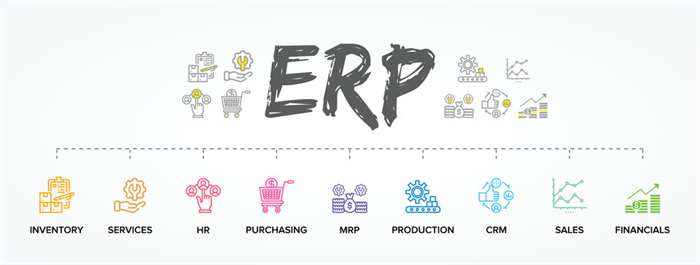- Ingeniería y Servicios Aluarte
- 938 384 2000
- contacto@aluarte.com.mx
What Is Kotlin Used For
RAGING BULL Casino Online RAGING BULL Australia Review & Bonus 2023
septiembre 4, 2023The Best Antivirus Application
septiembre 5, 2023What Is Kotlin Used For
From the very start of its development, Kotlin creators set the goal to make every library available to Kotlin programmers. It allows writing some parts of code that work seamlessly within Java code. It makes the process much easier to switch from Java to Kotlin during development. Programmers don’t have any problems reviewing and changing code written by other specialists. This is especially important during the implementation of complex projects when the development team grows.

In 2021 alone, about 2 million programming professionals used Kotlin at least once. Among them, roughly 1 million use Kotlin as one of their 3 primary languages. Enterprise IT environments that feature Android devices need personnel with a knowledge of Kotlin to perform unified endpoint management.
Which versions of JVM does Kotlin target?
It’s unlikely that Android will stop supporting Java any time soon. To move away from Java completely would represent a monumental shift in the Android ecosystem. There’s also the possibility of writing new code using Kotlin, and still having older code written in Java since the two languages are fully compatible. One more example of cross-language functionality is debugging. The Fleet debugger can automatically step between Swift and Kotlin code. Under the hood, Fleet chooses which backend to use to process code.
- Kotlin especially comes in handy for big projects and teams.
- Coupled with libraries like Selenium, Kotlin scripts can automate web tasks, from testing to data scraping.
- Since then, it’s become a favorite language for developers and replaced Java in many software projects.
- It’s concise, safe, interoperable with Java and other languages, and provides many ways to reuse code between multiple platforms for productive programming.
- Scripts can be run by passing the -script option and the corresponding script file to the compiler.
Scripts can be run by passing the -script option and the corresponding script file to the compiler. Destructuring declarations decompose an object into multiple variables at once, e.g. a 2D coordinate object might be destructured into two integers, x and y. As in C, C++, C#, Java, and Go, the entry point to a Kotlin program is a function named «main», which may be passed an array containing any command-line arguments. This is optional since Kotlin 1.3.[38] Perl, PHP, and Unix shell–style string interpolation is supported. Kotlin 1.3 added support for contracts,[35] which are stable for the standard library declarations, but still experimental for user-defined declarations. Contracts are inspired by Eiffel’s design by contract[36] programming paradigm.
What is Kotlin used for?
You can use it in both OO and FP styles, or mix elements of the two. With first-class support for features such as higher-order functions, function types and lambdas, Kotlin is a great choice if you’re doing or exploring functional programming. Kotlin Multi-platform Mobile is intended to be a software development kit for creating cross-platform mobile applications. This means that from one Kotlin code base, you’ll be able to compile apps that run on not just Android phones but also iPhones and the Apple Watch. This project is currently in the alpha stage but has a lot of promise.

This solution makes creating mobile and web apps much easier since you can share business logic between all platforms while retaining the ability to create a native UI. Kotlin is a modern but already mature programming language designed to make developers happier. It’s concise, safe, interoperable with Java and other languages, and provides many ways to reuse code between multiple platforms for productive programming.
Back-end web development
The KMP ecosystem also offers a range of tools for the iOS developer experience, with SKIE by Touchlab standing out. It generates Swift code that provides a Swift-friendly API layer, which bridges important Kotlin types, and implements seamless Coroutines interoperability. Going beyond the core, KMP also has some more advanced parts that we’re still continuing to work on. Expect/actual classes are an example of such functionality (not to be confused with expect/actual functions, which are fully stable in Kotlin 1.9.20). Such features are explicitly marked as non-stable, and Kotlin will inform you when you’re using them.

JavaScript is also a dynamically typed language so when we declare a variable we don’t need to specify its type. Google recommends developers start building Android applications with Kotlin, and has taken an increasingly Kotlin-first approach to modern Android development. Many Android Jetpack libraries have been either written completely in Kotlin, or support Kotlin language features such as coroutines.
Kotlin scripts can use external libraries, enabling a broad range of functionalities. With kotlin-main-kts, dependencies can be directly imported into the script. Each target platform requires its own build and packaging process. However, Kotlin Multiplatform integrates with tools like Gradle to automate and simplify these tasks. While the core logic is shared, Kotlin Multiplatform allows for platform-specific implementations.

With over 2.5 billion active Android users spanning over 190 countries, Kotlin is the ideal programming language for Android development. Once more, this feature makes Kotlin a more time-efficient kotlin development team programming language as compared to Java, which requires a lot of manual coding to be performed. Java lacks this feature, which makes Kotlin superior in terms of using multiple inheritances.

